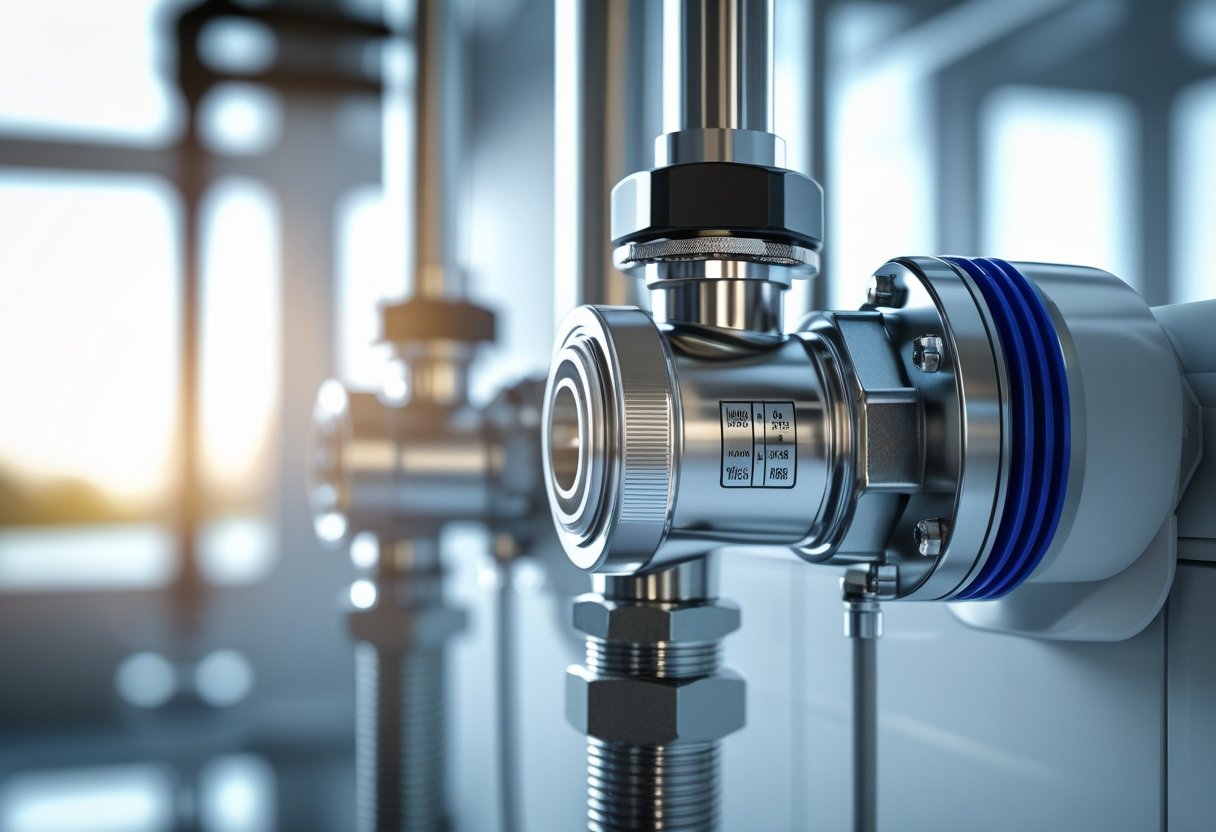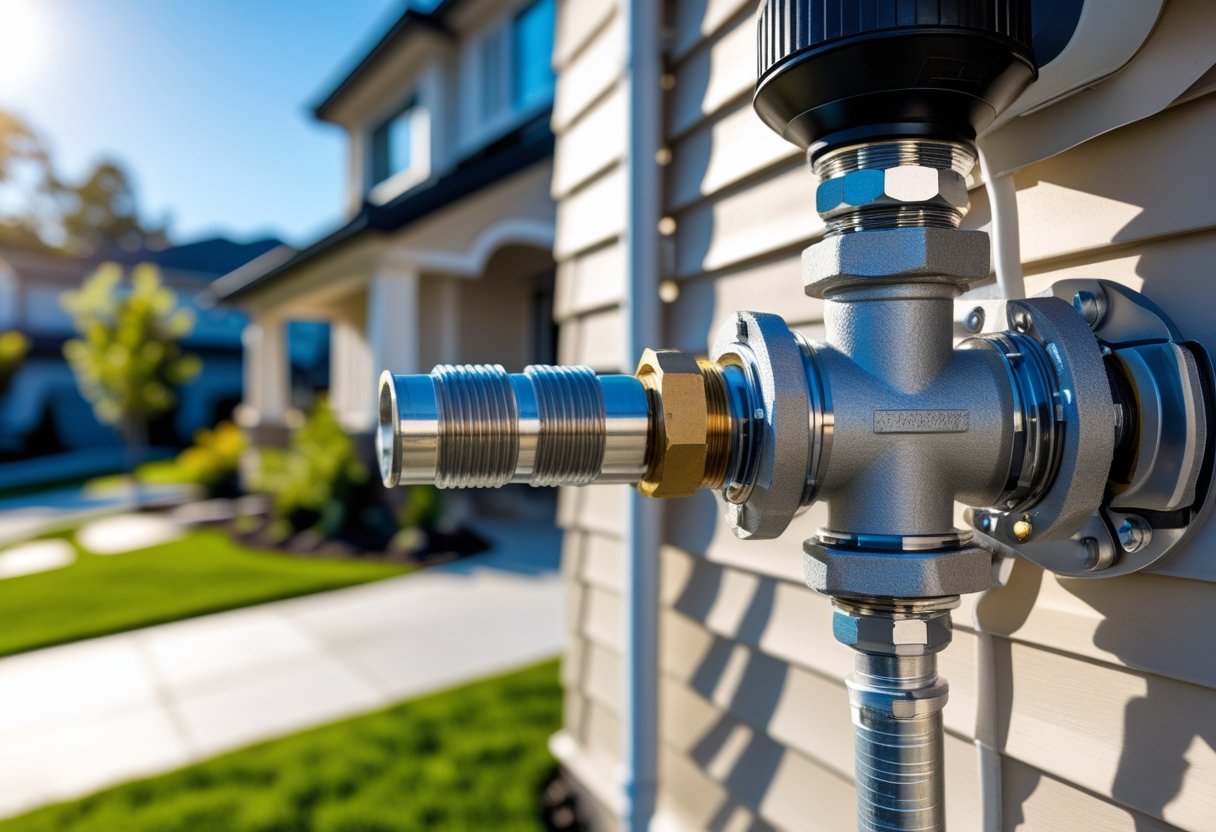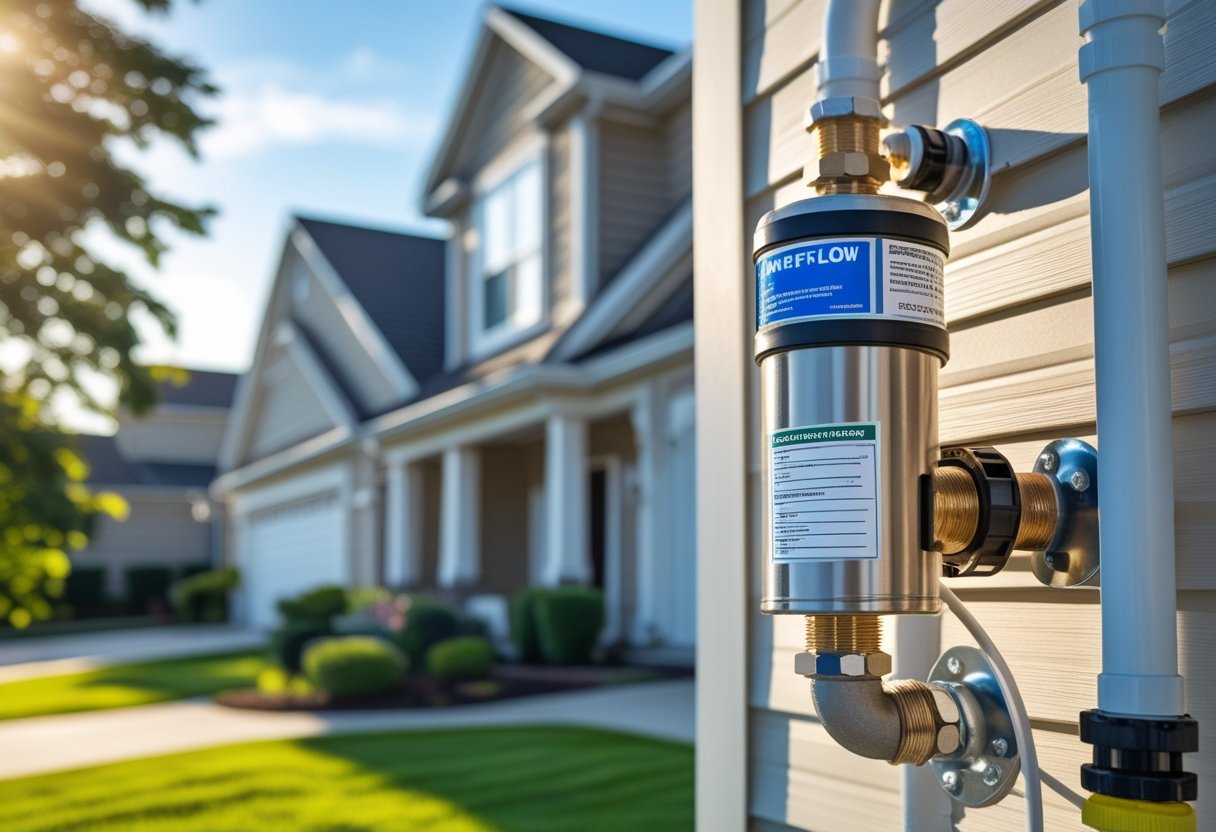If you’ve got a backflow preventer on your property, keeping it safe from theft is honestly a must. Losing a backflow device to thieves can end up costing you a fortune—not to mention risking water contamination or even running into code violations. Just a few practical steps can help keep your water clean and your property on the right side of the law.
One of the most effective deterrents? A tough, custom-fit backflow cage. This kind of security makes life a lot harder for would-be thieves and lets you sleep a little easier. Checking your backflow preventer now and then for tampering doesn’t hurt, either.
Pacific Backflow covers all of San Diego County and offers services to keep your preventer locked down. Whether you’re after testing, repairs, or a solid cage installation, a reputable company can help you protect your investment and your water.
Understanding Backflow Preventer Theft
Backflow preventers play a big role in keeping your water safe, but unfortunately, they can attract the wrong kind of attention. Why do people steal them? What should you watch for? And what happens if one goes missing?
Why Backflow Preventers Are Targeted
Thieves like backflow preventers because they’re packed with valuable metals—brass and copper, mostly. These parts can be sold off for quick cash, which makes the devices a tempting prize.
Where your backflow preventer sits matters, too. If it’s out in the open or not well-secured, it’s an easy target. Poor lighting or a lack of fencing just makes things worse.
A lot of thefts happen simply because the device isn’t protected enough. Slapping on a sturdy cage or cover can make a big difference.
Common Signs of Backflow Preventer Theft
If your water pressure suddenly drops or you get contamination warnings, your backflow preventer might be gone.
Other red flags: broken cages, loose fittings, or damaged pipes around the device.
Sometimes, you’ll fail safety tests or notice odd water flow. It’s worth giving your device a quick check now and then.
Consequences of Theft for Property Owners
If someone steals your backflow preventer, your water supply is at risk. Contamination can lead to health problems for you, your family, or your customers.
You’ll probably face expensive repairs or replacement bills. Local codes often require a working backflow preventer, so you could get fined, too.
Losing your device might even mean your water service gets interrupted until you replace it. Keeping your backflow preventer protected just makes sense.
Choosing Secure Backflow Preventers
Protecting your backflow preventer starts with choosing the right device. The materials and design really matter if you want to keep thieves at bay. Go for sturdy parts and features that make tampering tough.
Selecting Theft-Resistant Materials
Pick a backflow preventer built from heavy-duty metals like stainless steel or brass. These stand up to cutting and drilling much better than plastic.
Look for finishes that fight off rust and corrosion, too. Some models come with reinforced bolts and locked covers, making them a pain to remove without special tools.
Tamper-Proof Design Features
Go for backflow preventers with anti-tampering designs. Sealed or locked covers help keep out anyone who shouldn’t be poking around. Certain models even have alarms that go off if someone tries messing with them.
Custom-fit cages or enclosures add another layer of protection. Pacific Backflow offers snug cages that shield your device from theft and vandalism. Security screws or bolts that need special tools? Definitely a plus.
Physical Security Tips
Securing your backflow preventer isn’t rocket science—it’s about using smart, solid methods. Physical barriers, strategic placement, and the right fasteners go a long way.
Installing Locking Security Cages
A locking security cage is a top pick for keeping your backflow preventer safe. These metal cages fit tightly around your device and keep thieves from getting their hands on it.
Choose cages with heavy-duty locks that only you or your technician can open. Custom-fitted cages are best because they limit where someone can get in. They also help prevent vandals from damaging the device or messing with how it works.
Pacific Backflow can handle cage installation that meets local rules and still lets you get in for maintenance.
Mounting Backflow Preventers Strategically
Location counts—a lot. Try to keep your backflow preventer out of plain sight and away from areas where anyone can walk right up to it.
Near a fence, behind a locked gate, or close to a building are all better spots. The more eyes on the area, the less appealing it is to thieves.
Make sure the mounting is solid. If someone can’t just pick it up and walk away, they’ll probably move on.
Using Tamper-Resistant Fasteners
Tamper-resistant screws and bolts aren’t easy to remove without the right tools. Use these on your backflow preventer and its cage to keep out anyone who doesn’t belong.
Standard screws are a breeze for thieves. The special ones make the job a lot harder. Check them now and then to make sure they’re still tight and undamaged.
Installing Pipe Shields or Covers
Pipe shields or covers protect the exposed parts of your backflow preventer. They wrap around pipes and keep them safe from damage or tampering.
Strong covers also help prevent vandalism or accidental hits. Just make sure they fit well and don’t get in the way when it’s time for maintenance. Combine them with cages and smart placement for even better security.
Deterrent Measures
Sometimes, simple changes can go a long way in keeping thieves away from your backflow preventer. Making your property less inviting and easier to watch helps a lot.
Lighting and Visibility Enhancements
Good lighting is your friend. Bright outdoor lights or motion sensors keep the area visible after dark and cut down on hiding spots.
Aim lights to cover every side of your backflow device. Get rid of any clutter or overgrown bushes that block the view.
A well-lit, open space makes it much riskier for someone to try anything sneaky.
Posting Warning Signage
Don’t underestimate a good sign. Put up clear, visible warnings near your backflow preventer.
Try:
- “Backflow Device Protected — Theft & Vandalism Monitored”
- “48-Hour Surveillance Area”
Signs tell would-be thieves you’re paying attention. When you pair signage with cages or lighting, your security gets even better.
At Pacific Backflow, we’re all for combining these deterrents with physical barriers to keep your system safe and compliant.
Technology and Surveillance Options
A bit of tech can really boost your backflow preventer’s security. Cameras and alarms let you know if someone’s up to no good before anything bad happens.
Video Security Systems
Cameras let you keep an eye on your backflow device day and night. Place them nearby to catch any movement and save footage in case you need it later.
Night vision and motion detection are great features. Some systems send alerts straight to your phone, so you’re never left in the dark.
Visible cameras can scare off thieves, too. Just make sure they’re weatherproof and aimed right at your preventer.
Motion Sensor Alarms
Motion alarms blast a loud sound if anyone gets too close to your backflow preventer. That’s usually enough to send a thief running.
Some alarms connect to your phone or security system for instant alerts. Pick ones that are easy to install and check them regularly to avoid false alarms. Pairing alarms with a strong cage from Pacific Backflow? Pretty solid combo.
Maintenance and Inspection Practices
You’ve got to stay alert if you want to keep your backflow preventer secure. Check it often and look for anything that seems off. Quick action can stop a theft before it happens.
Regular Security Checks
Give your backflow preventer a regular once-over for tampering or damage. Make sure the lock and cage (if you have one) are still solid. Scratches, tool marks, or missing parts? Not a good sign.
Snapping a few photos during your checks helps create a record in case something goes wrong. Clear away brush or junk that might hide the device or make it easier to steal.
Set a reminder to check at least monthly—more often if your device sits somewhere public or exposed.
Reporting Suspicious Activity
If you see someone lurking around your backflow preventer, don’t wait. Jot down anything helpful—clothes, time, what they were doing.
Call the police right away if you spot theft or vandalism. The sooner you report, the better your chances of getting your property back.
You can also reach out to your water provider or a backflow service like Pacific Backflow for advice on beefing up your security.
Staying on top of things and reporting issues quickly is your best bet for keeping your backflow preventer safe.
Partnering With Local Authorities
Teaming up with local authorities can make a real difference in keeping your backflow preventer secure. Knowing when to contact the police and working with your neighbors adds another layer of protection.
Notifying Law Enforcement
If your backflow preventer gets stolen or tampered with, call the police right away. Give them all the details—location, time, anything odd you noticed. This helps them spot patterns and react faster next time.
Ask your local department about crime in your area and get their security tips. Sometimes, they’ll even suggest extra patrols or watch certain spots.
Filing a police report helps you and supports community efforts to fight theft. Keep a copy for insurance or repair needs.
Neighborhood Watch Collaboration
Your neighborhood watch can be a big help. Let them know where your backflow preventer is and if you’ve had any trouble.
Work together to keep an eye out, especially when theft seems more likely. The more people watching, the better.
Hold regular meetings to talk security and share tips. Maybe you’ll even come up with new ideas, like better lighting or cameras.
When thieves know neighbors are alert and connected, they usually think twice.
Protecting Backflow Preventers in High-Risk Areas
If your backflow preventer’s in a spot where theft happens a lot, you’ll need to be extra careful. Knowing the risks in your area and working with local groups can help keep your device safe and secure.
Assessing Area-Specific Vulnerabilities
Start by taking a good look at where your backflow preventer sits. Is it tucked behind a fence that’s always open? Maybe it’s hidden in a spot nobody can see, or maybe there’s barely any lighting at night. These little details can make your equipment an easy target for thieves.
Think about what’s happening nearby, too. Is the area usually buzzing with people, or is it more like a ghost town? Places with more foot traffic usually mean more eyes around, which tends to scare off trouble. But if your site is quiet and out of the way, well, that’s a thief’s dream.
Jot down what stands out and how you might fix it. Here’s a quick example:
VulnerabilityPossible Solution Poor lightingInstall motion-activated lightsOpen access gatesAdd locks or barriersHidden locationTrim plants or add cameras
These changes don’t have to be complicated, but they can make a real difference in how attractive your backflow preventer looks to someone looking for an easy score.
Engaging with Local Businesses and Communities
You don’t have to tackle this alone. Getting local businesses and neighbors involved can turn your area into a mini neighborhood watch. Let folks know about backflow preventer theft and ask if they’ve seen anything odd.
Neighborhood groups and business associations usually have Facebook pages, group texts, or meetings—great places to spread the word. Sometimes just asking the shop next door to keep an eye out helps.
You might even start a basic text alert system or group chat. It doesn’t have to be fancy, just something that keeps everyone in the loop if something weird pops up.
At Pacific Backflow, we’ve noticed that when people work together, water safety gear is a lot less likely to disappear. It’s worth checking if local police or the city offer crime prevention tips or programs. Having their support gives you a bit more peace of mind.
Frequently Asked Questions
Protecting your backflow preventer from theft isn’t just about fancy gadgets. Sometimes it’s the simple stuff—locks, regular walk-bys, and smart landscaping—that really works.
What are some effective ways to secure my backflow preventer against theft?
Try putting a sturdy metal cage around your backflow preventer. If you can, anchor it right into a concrete pad—makes it a pain to move. Specialized locks made for these devices are worth it too. And honestly, if you can keep it out of plain sight, even better.
Can landscaping help protect my backflow device, and if so, how?
Absolutely. Shrubs and bushes can hide your device and make it trickier for someone to get at it. Just don’t go overboard—pick plants that let you get in for maintenance when you need to.
Keep an eye out so nothing blocks access for repairs or testing. A little greenery can go a long way, as long as you don’t forget about the device entirely.
Are there specific locks or security devices recommended for backflow preventers?
Yep—look for tamper-proof locks made for outdoor plumbing. Some have special keys or codes, which is handy. Go for heavy-duty, UV-resistant materials if you want them to last. And if you really want strong protection, custom cages with built-in locks are a solid choice.
Does insurance cover the theft of backflow preventers?
It really depends on your policy. Some homeowners and business policies cover theft or damage, but you’ll want to double-check with your insurer.
Take a few photos and keep records of your device—just in case you ever need to file a claim.
How often should I check my backflow preventer for signs of tampering or attempted theft?
Give it a look every few months, at least. Watch for scratches, busted locks, or any sign someone’s messed with it.
It’s smart to check after storms or nearby construction, too. Sometimes “damage” isn’t theft—it’s just bad luck or heavy equipment getting too close.
Should I install a camera or alarm system near my backflow prevention device?
Putting up a camera or a motion sensor alarm can really make thieves think twice, plus you'll have a way to check out anything odd that happens. Sometimes just having a security camera where people can see it does the trick.
Got more than one backflow preventer or an area that's extra vulnerable? You might want to ask a pro what kind of setup makes sense.
If you're scratching your head about how to protect your backflow device, Pacific Backflow has some tough protection options and can give you advice to help keep your system safe in San Diego County.











